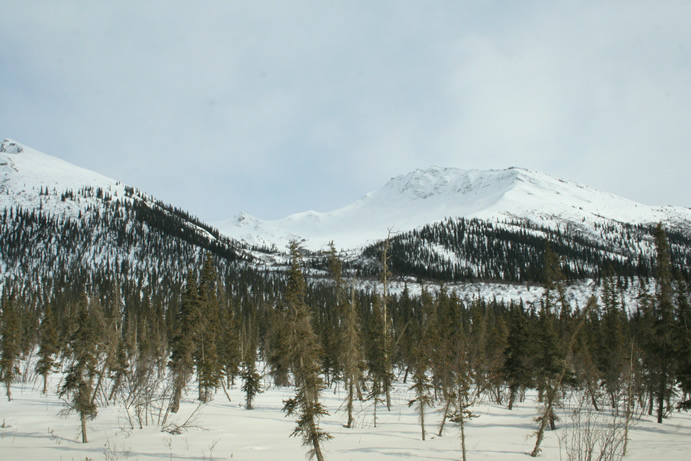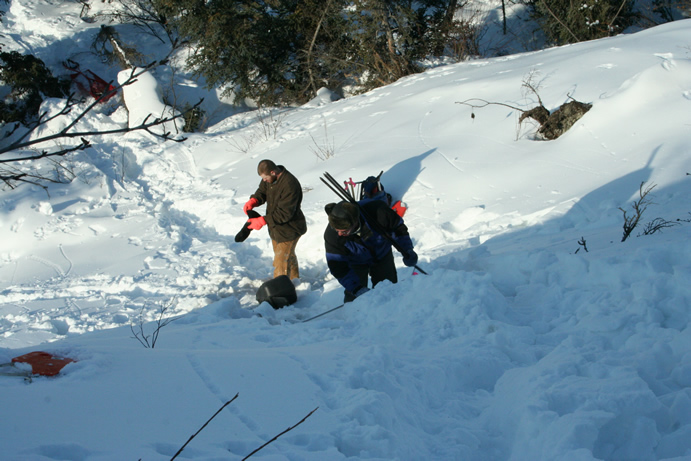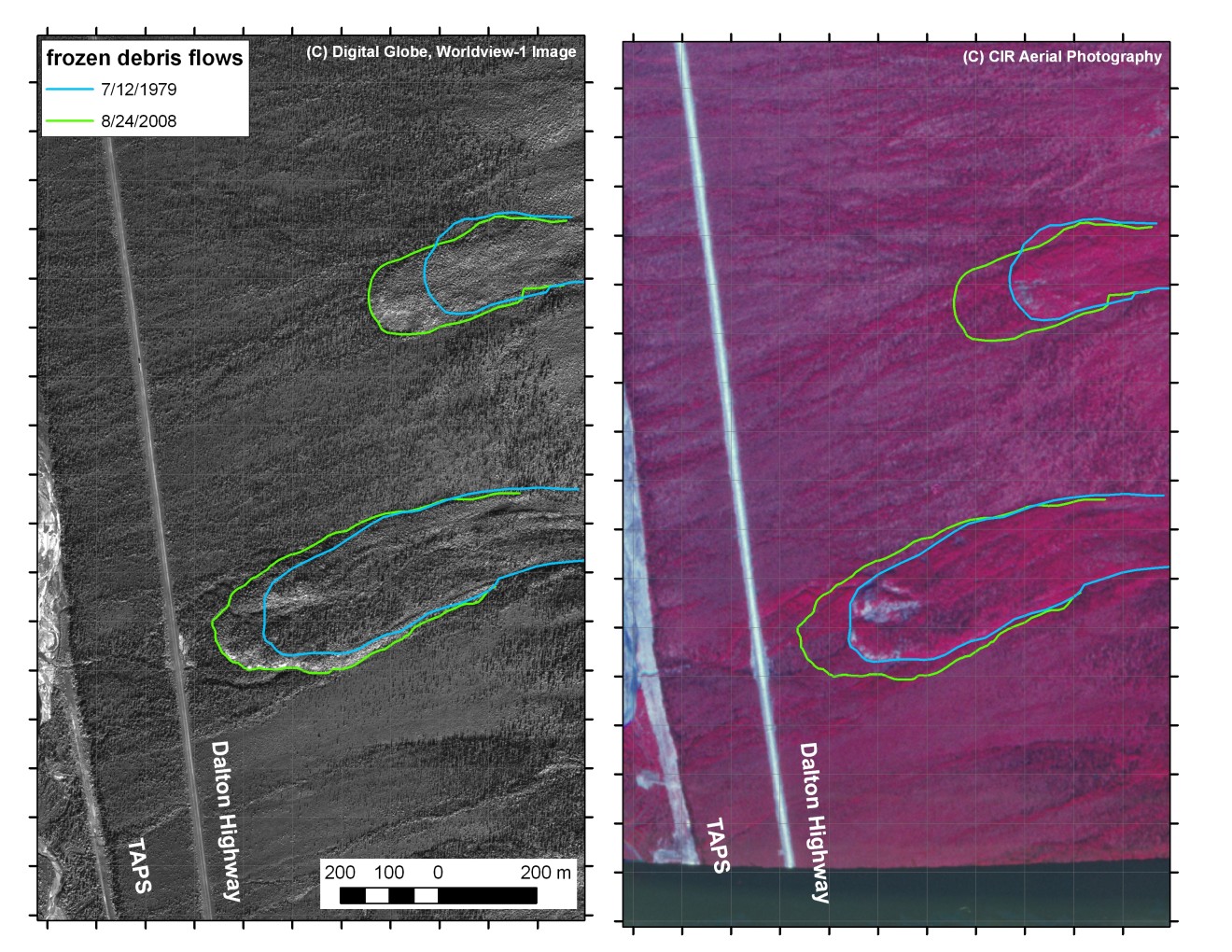Frozen Debris Lobes in the Brooks Range
Project Summary
 |
Flow slides are geological features, where mixed materials (coarse and fine grained materials) slide from mountain sides. They have been identified in the Brooks Range Alaska, although they may occur elsewhere. The features where first described in Hamilton [1979] as “Unsorted, nonstratified angular to subangular rubble in fine-grained matrix forming lobes subject to slow and probably continuous downslope motion. Common on all varieties of schist within Chandalar quadrangle (see Brosge and Reiser, 1964); also present locally on slate, limestone, and hornfels. Probably include some inactive rock glaciers”. These flow slides occur in frozen material rather then the better known flow slides of thawed soils, also known as mud slides. An example of a flow slide can be seen in Figure 1.
In April of 2008 we went out to investigate flow slides. The snow season is good to identify drunken trees on the hill slopes along the Dalton Highway. Together with a DOT official we selected a flow slide that is close the the road. This gave us relatively easy access and it is a flow slide that could potentially damage the road.
 |
 |
 |
 |
 |
During our trip we found buried trees, brush, and vegetation. There was evidence that there is increased movement during the freezing period. We found gouging or scouring marks under a slab of fine grained material. The slab was frozen because it did not slump, however the bottom was wet during movement so it left the marks in the wet sediment.
We cut a tree growing on this feature in order to determine it growing behavior over time. We found that the particular tree we cut was 178 years old and during that period it tipped over approximately 8 times. Two of these events were matched with soil temperature data collected by the Permafrost Laboratory and it was found that there is a correlation between the tree ring data and soil temperature.
This correlation needs to be verified by other trees and flow slides. Other questions that are related to this data are: What is the duration of movement of these features? Due to a warmer climate are these features going to be moving more and for a longer time? The current estimate of movement based on last years leaves on brush in cracks of the flow slide are ~2m per year. More data will be collected trough remote sensing imagery to find out more about movement.
Remote sensing



